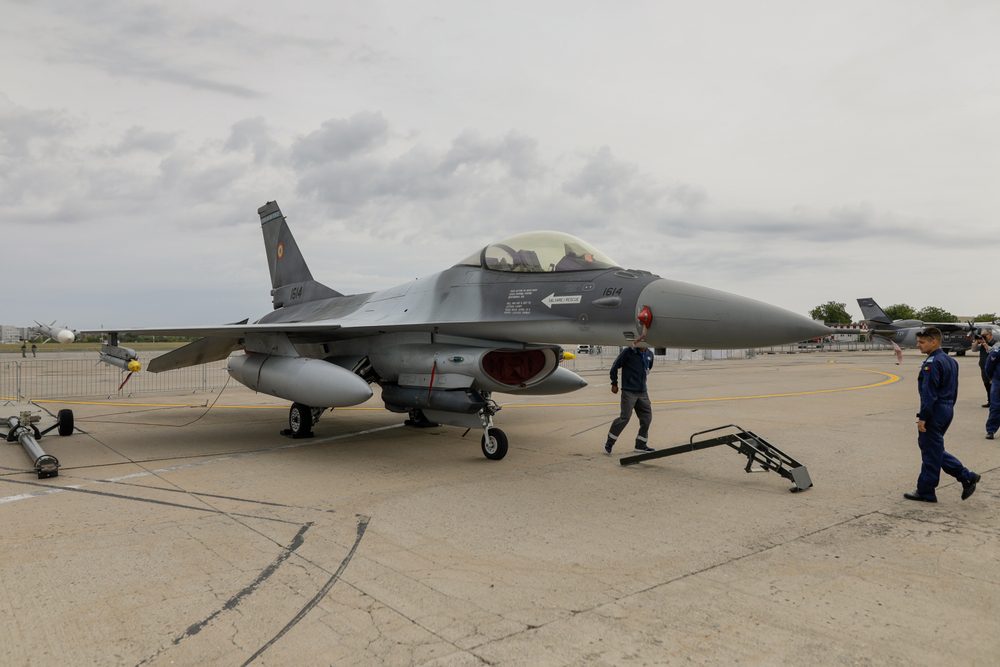NATO officials within the “fighter jet coalition” are eyeing Romania as the possible location for training Ukrainian pilots on F-16 fighter jets, Politico reported on Wednesday, June 21st. Although this might show that the much-anticipated Western plan of equipping Kyiv with fourth-generation fighter jets is moving ahead, there’s still no indication that any ally would give up their own F-16s to be actually used above the battlefield.
According to confidential Pentagon sources close to the paper, the fighter jet coalition is currently negotiating a contract with Bucharest to let them host the training of Ukrainian pilots in the country, which most likely would be conducted by specialists of the U.S. arms manufacturer Lockheed Martin, the company behind producing the F-16s.
This last bit was confirmed by Lockheed Martin as well, with a company spokesman saying that the firm stands ready to begin training UAF pilots and maintenance crew as soon as there’s an agreement between the Western nations—and as soon as some agree to send the aircraft themselves.
According to the paper, NATO officials neither confirmed nor denied that Romania would be the most likely training site, nonetheless, the Dutch Defense Ministry did say that the coalition is working on establishing a training center somewhere in Eastern Europe.
Of all the NATO countries close to Ukraine (and thus making the operation logistically more feasible), Romania appears to be the most logical and least risky pick, since unlike Poland, Finland, or the Baltics, it doesn’t share a direct border with Russia or Belarus.
However, there’s still no news about any country giving fourth-generation fighters to Ukraine. “The delivery of F16s is not at the table now,” the Dutch Defense Ministry spokesman said. “We are working very hard to start the F-16 training … as soon as possible, [but] delivery requires a separate decision-making process.”
As we wrote last month, the mainly Dutch and Danish-led efforts to provide Ukraine with much-needed air superiority by fulfilling Kyiv’s specific request for a fleet of 50 F-16 fighter jets had its first major breakthrough when Washington formally joined the pact, allowing allies to transfer their surplus aircraft to Ukraine.
But whether anyone has a “surplus” of these aircraft—with a single F-16 costing around $30 million—remains to be seen as allies rushed to pledge their assistance in the training phase, but to date, not a single commitment to give fighter jets to Ukraine had been announced.
Apart from Denmark and the Netherlands, the fighter jet coalition also includes the U.S., the UK, Norway, Portugal, and Belgium, who—the U.S. excluded—operate around 230 F-16s between them. The United Kingdom does not have any of these specific aircraft, but it volunteered to provide basic theoretical training to Ukrainian pilots before they begin flying.
In Europe, only three other countries—Greece, Poland, and Romania—own some operational F-16s, while Slovakia and Bulgaria are looking to join them in the near future. Countries outside Europe—such as Turkey, Egypt, Pakistan, Israel, or Taiwan—could also be courted by the international coalition to give up some of theirs.
Of course, all eyes are truly on the U.S., which operates around 900 F-16s in its fleet alone, making it the only country to be able to fulfill Ukraine’s wishes without an unaffordable sacrifice.
While the training of UAF pilots should begin in the summer, further progress in deciding on the transfers is not expected until NATO’s upcoming Vilnius Summit in mid-July. As the U.S. Defense Secretary Lloyd Austin noted last week, “there’s a lot of work to do” until there’s a final decision.






